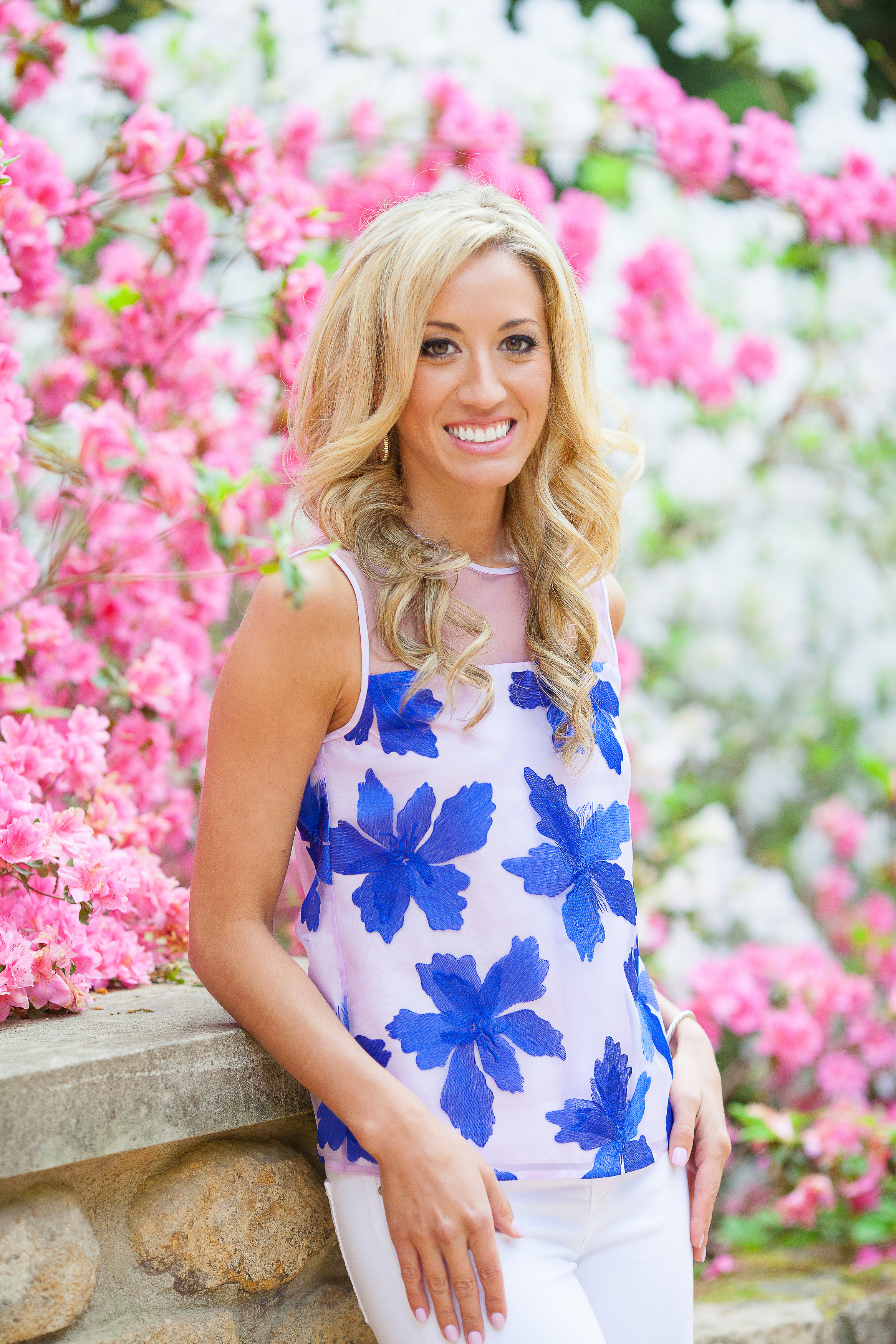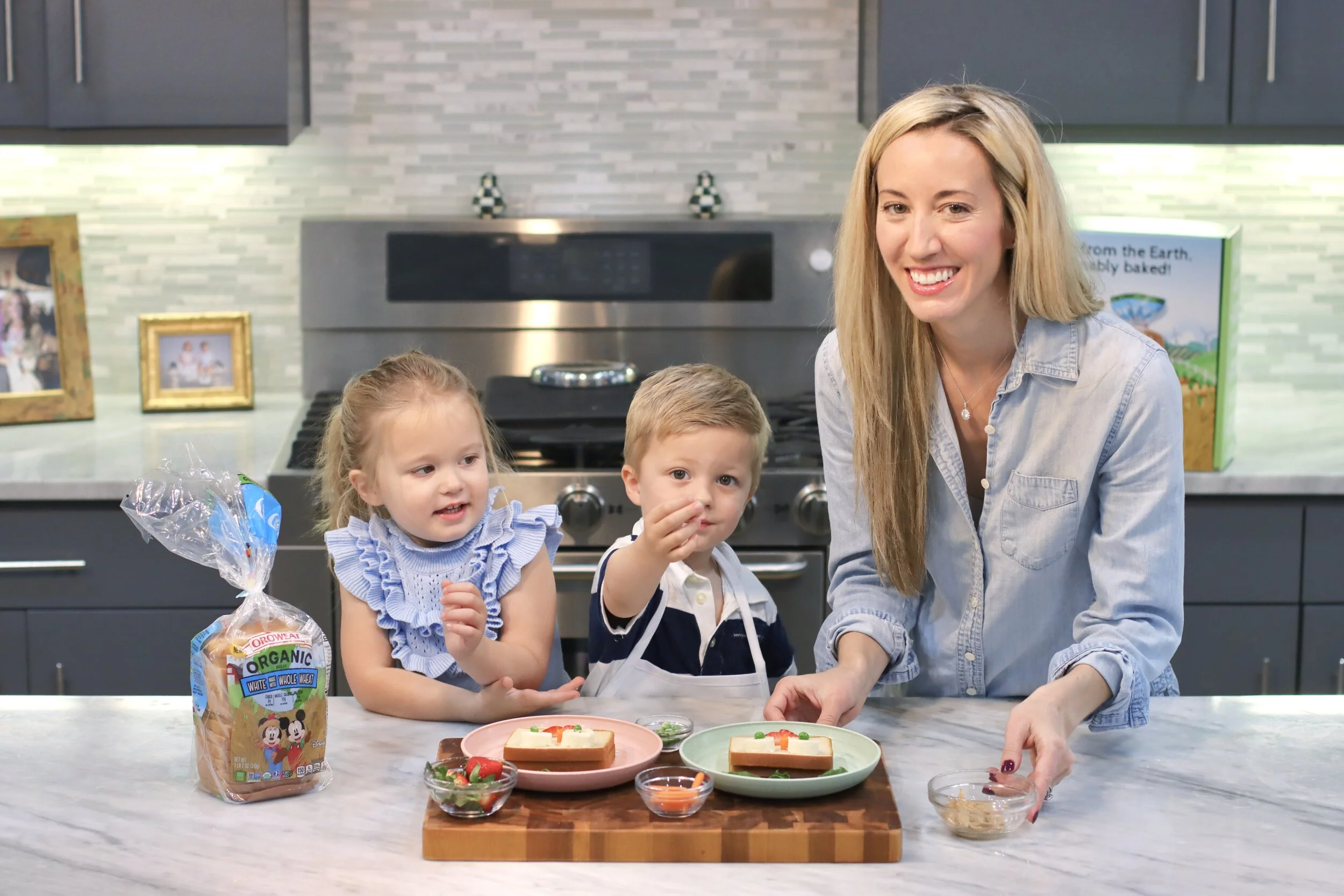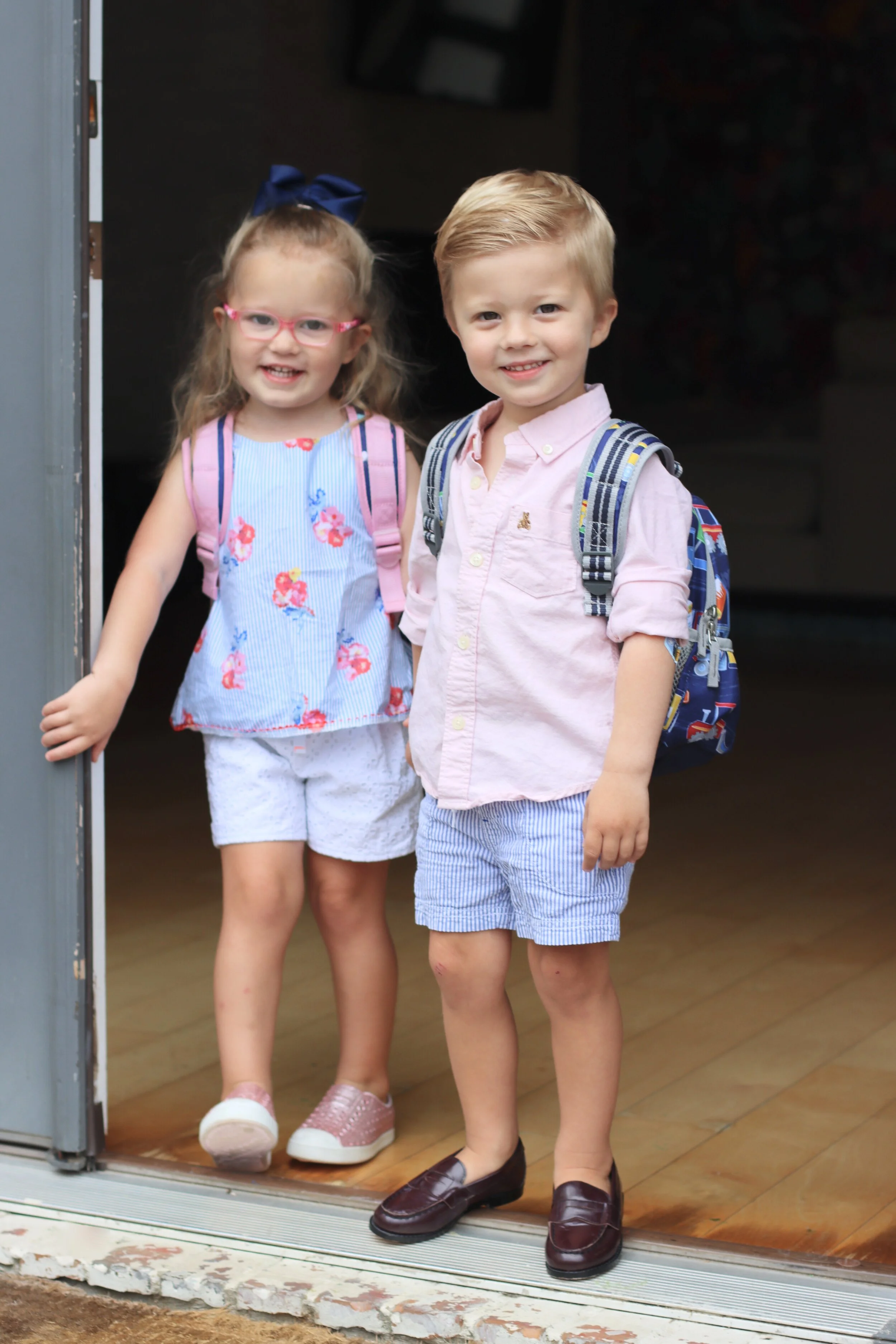How We Got Our Toddler to Keep Her Glasses On
Complete and utter denial--that’s what I was in when the pediatrician told me in January 2019 that my then 15-month-old girl twin, Joules, was farsighted in her right eye and needed to be seen by an ophthalmologist. The pediatrician had just done a standardized vision screening (normally performed at that age) that revealed the initial results. I remember telling myself that the doctor’s assessment was probably just off and that the eye doctor would tell us that everything was okay. I mean, Joules had always acted like she could see perfectly. So, there had to be a mistake, right?
Wrong. There was no mistake at all.
We took Joules to the ophthalmologist where they confirmed there was a problem with her right eye—which I still didn’t really believe because I was still in denial. So, we then took her to get a second opinion at another ophthalmologist--where they AGAIN confirmed something was wrong.
She is farsighted with accommodative esotropia in her right eye. This essentially means that she has trouble seeing close up and her right eye is slightly misaligned inward sometimes. I was told she will likely need to wear glasses for the next 7 years—until she’s old enough to wear contacts. I was also told she needed to patch her strong eye (in order to strengthen the weak eye) for 2 hours every single day. We were given a prescription for atropine eye drops (as a backup in the event that she wouldn’t wear her patch—but we never ended up needing the drops) and we were made aware that surgery would be a last resort. The plan was to patch and wear glasses for the time being and see how she did over time with frequent follow-up appointments.
At first, I was reluctant to share this with anyone, because I felt heartbroken—especially when thinking about any difficulties she might have because of it. As parents, we never wish for our kids to have ANY hurdles in life. I basically needed to process it myself. The time of processing the information was made more difficult, though, because when we started putting her glasses on her for the first time, she cried hysterically and threw them down to the ground--making my heart crumble just a little bit more.
But, the story doesn’t end there. Things got SO MUCH BETTER.
Fast forward over 1.5 years later to this very moment—and I have an almost 3-year-old Joules that absolutely LOVES her glasses. She actually gets upset when she doesn’t have them on! Joules is responsible with her glasses, always knows where they are, and wears her eye patch for 2 hours/day without ANY problem whatsoever. I have fully accepted her eye condition, she is a superstar, and--to be honest--I couldn’t picture her any other way now!
But how did we get here? That’s what I want to share with you.
After figuring out how to get our daughter to happily comply with her glasses and eye patches, here are my recommendations to help you do the same:
1. Let them see others in glasses and/or patches (dolls, friends, family members, photos of other kids, etc.)
When our daughter first saw her favorite Dolly trying the eye patch and glasses on, I think it helped Joules see that it wasn’t scary! Medical play can go a long way. We also used this same method to get our kids to wear their face masks during the pandemic. My mother and I both have glasses and contacts, so we would make a point to wear our glasses more around Joules during those initial few months—so she could see she wasn’t alone and that it was a normal thing to have on your face. Her twin, Ames, even wore sunglasses around her (which was his own idea) so that he could be cool like her!
2. Explain in terms your child can understand why he/she needs to wear glasses/eye patches.
We kept it very simple, because Joules was only a little over a year old when she started wearing her gear. We told her something like, “Glasses help our eyes see things better, like our toys and books! Sometimes our eyes just need a little bit of help to see.”
3. Use some distraction techniques.
In the beginning whenever it was time to put Joules’ eye patch or glasses on, we would try to have a favorite toy, book, or even a cartoon on nearby. We would use anything we knew she liked to shift the focus from the fact that we were applying her glasses/patch on to whatever exciting thing was right in front of her. Worked like a charm!
4. Let your child see themselves in the mirror while wearing the gear.
I think having Joules see herself in the mirror took some of the fear out of it. She then knew what she looked like wearing it and it became a more familiar sight over time.
5. Ensure proper fit and comfort.
Of course, the fit of glasses really falls on the expertise of the optical store but talk with them on sight to ensure your child has the proper fit. When Joules was first getting fitted for her glasses, we took her in person to a local pediatric optical store that was recommended by her eye doctor. At this store, they measured her face and she got to try on several different types of frames. We wanted to make sure her small nose and ears were comfortable, so we chose glasses that had rubber sides to go over the ears and optional nose pads. There are also straps that can be applied onto the glasses (kind of like the straps on goggles) to keep glasses in place. Although we never used this, it’s an option that came with her glasses kit. Her glasses are made by the Tomato brand and can be seen in the photo below.
6. Let the child have some choice in the colors and/or patterns of eye gear.
We let Joules pick out the color of glasses she got (pink!) and also whenever she is due to get a new set of eye patches, we let her pick out the patterns. These days, toddler eye patches come in some adorable varieties! Giving them some autonomy in the matter may increase the chances of them complying with wearing the gear. Here are some of Joules’ favorite toddler-sized eye patches (51 patches/package):
7. Be persistent.
This is probably the most important one of them all--in my opinion. Whenever Joules took her glasses off, we would just try and try again and again and again—but while keeping a smile on our faces and trying to make it a happy experience. Trust me, there were some tough days. In the first few months, she was not a fan of wearing anything on her face. She would cry, hide her glasses, and then I would have to turn the house upside down to find them. If she ever cried hysterically over it, I would set them aside for a few minutes...and then try again. It can get frustrating, but don’t give up!
8. Give some positive reinforcement!
We would make a point to tell Joules how great of a job she was doing when she wore hers in the beginning. When she thought she was doing something good, then she would do it more. Sometimes we gave her a snack/treat as a reward and that would help, too!
9. Make it a part of the routine.
Joules is so fabulous with this part now. She knows she needs her glasses when she first wakes up (so she grabs them from the bathroom counter when we brush her teeth) and she knows she needs to take them off for naps/bedtime (so she hands them to me before she goes to sleep). Just make it a regular part of their day at the same time each day.
10. Remember that it takes time.
Just know going into this, that it will possibly takes months before your child fully adapts and accepts wearing their glasses/patch. It took Joules a full 3 months before she would wear her glasses consistently without ripping them off and crying. But once we got through that phase (and she really realized how well she could see with her glasses on), life got a lot better. Here is one of the first photos I got of Joules happily wearing her glasses at 19 months in May 2019.
For now, through using these techniques above, we’ve been able to ensure excellent compliance with Joules and avoid surgery so far.
If you’re a parent going through a new vision diagnosis in your child, just know that you’re not alone. It can be challenging to accept and process, but hopefully with time you will make it to the “other side” of things like we did. Although it was incredibly hard for me to talk about with anyone in the beginning, I’m now incredibly open about it and want to help other parents get through the process, too. Everything is going to be okay—and I’m here for you!








